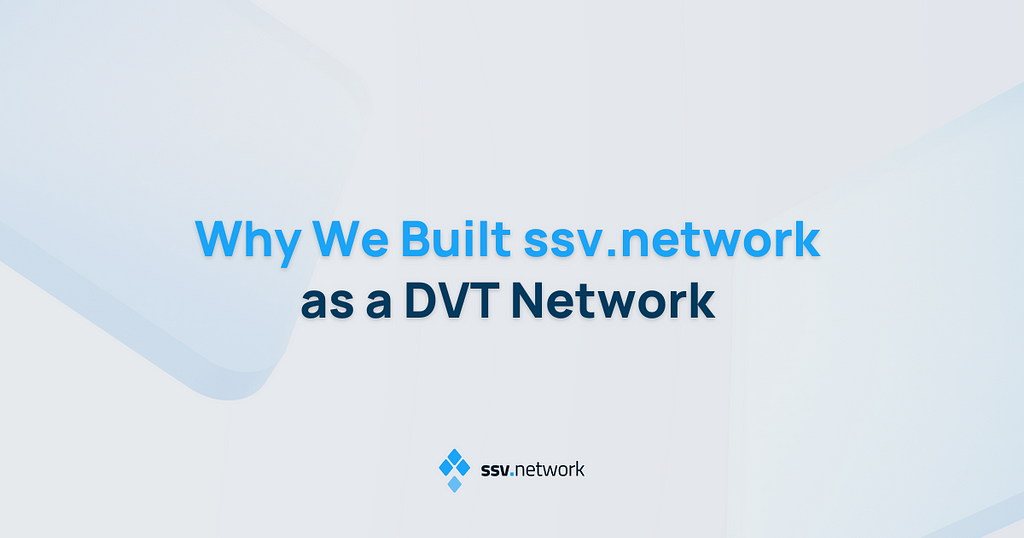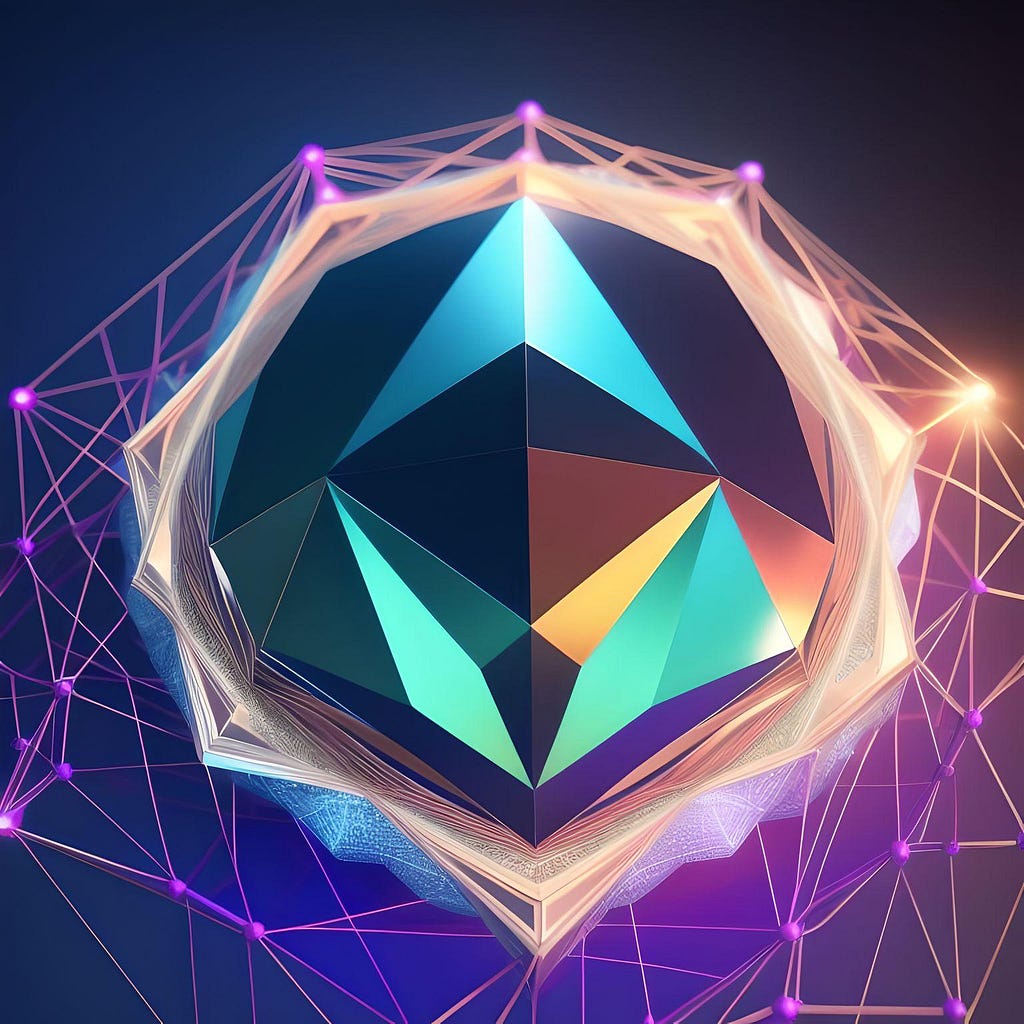Why We Built ssv.network as a DVT Network
DVT can be implemented in various ways. In this post we share why we built ssv.network as a network implementation.

TL;DR
Ethereum consists of many different networks. Each taking care of a distinct function and plays a role in the Ethereum blockchain. The whole is indeed greater than the sum of its parts.
In this post, we’ll share:
DVT Networks are here to usher in a new level of decentralization and robustness for Ethereum.
When you take a step back and look at the evolution of Ethereum and many of its core constituents, PoS consensus, EVMs, L2s, and MEV. We can see that, fundamentally, these are all networks inside a network. Every significant progression in Ethereum was achieved through the implementation of networks.
The Ethereum Virtual Machine (EVM) is a decentralized platform where multiple instances of the EVM run on different nodes across the network, executing smart contracts and more. L2 solutions are networks for processing faster, cheaper transactions. And even MEV is made up of networks that relay and order transactions.
The implementation of networks has also been instrumental in the growth of decentralized finance (DeFi). DeFi became what it is today because of the “Defi Legos.” Cross-composability, shared tooling, and the like has allowed this prominent industry to amass the billions in value that currently flows through it.
Uniswap without a MakerDAO or Lido without a Curve or AAVE would be considerably different from what they are today. The power of networks lies in the compounding force of the network effect through shared resources. Because of this, everyone benefits, and the network grows together.
These shared networks have allowed developers to work on an even playing field and co-create an ecosystem that everyone participates in. It is this cross-composability, shared tooling, and open-source ethos that has enabled the development of the robust ecosystem we use today.

Ssv.network is more than just an infrastructure solution to provide fault tolerance to Ethereum validators. It is the conceptualization of a vision to support the Ethereum ecosystem as a whole. To make a network that can improve Ethereum, as other networks have done before us.
The ssv.network has was developed as a trustless, permissionless, and ready-to-use validator infrastructure — powered by DVT. The protocol is built on a network of nodes that can distribute the operation of an ETH validator between 4 or even 13 nodes. This greatly improves decentralization of Ethereum’s validator layer.
The protocol uses smart contracts to facilitate seamless customization and zero coordination of the nodes that maintain a distributed validator in the network.
Builders can also utilize smart contracts to develop innovative applications and tooling for staking. Since the protocol was constructed as a public good, the ssv.network is open and suited for everyone, from developers to solo stakers to institutions and service providers. Fast & Reusable staking infrastructure makes ssv.network a powerful platform for any staking-based use case.

The bonus of creating a reusable public good is that there is a network effect. Applications and tooling developed by builders can be used by the rest of the network as well. The network effect of ssv.network stems from its ability to support a diverse range of stakeholders in the Ethereum staking ecosystem.
Inclusiveness allows more participants to engage with the network, leading to a more robust ecosystem. The reusability of validator infrastructure brings several benefits. First, it saves developers and users valuable time and resources that would be spent on building and maintaining their own infrastructure. And because of the former, simplified development efforts ultimately lead to accelerated innovation in the staking industry.
Building a DVT network like ssv.network cannot be achieved alone. It requires a community and committed DAO members, Operators, Testers, and partners to see the tech come to fruition. Ssv.network has been in development for over two years and has seen many dedicated contributors across 10+ countries participate in creating the ecosystem.
To help sustain the ecosystem, the community governed SSV DAO has opened various funding opportunities for those building DVT-base applications. To date, 40+ grant recipients have reached over $1.6 million allocated to their staking use cases. Funding options also include a $50 million ecosystem fund to achieve the vision of migrating all staked ETH to DVT.
Ssv.network allows builders to develop the next go-to staking applications. The ecosystem supports them on this mission as they work alongside a global community of developers; who are all aiming at the same goal. Decentralization.
With ssv.network providing the infrastructure, builders can focus on innovation, creating new products, and bringing them to market. The more applications built on ssv.network, the greater the network effect and robustness for everyone participating.
The mainnet launch is set to roll out during Q2 2023. The launch will follow a phased approach to ensure the protocol and the ecosystem take off smoothly. Stay tuned for the mainnet rollout plan that we’ll be sharing in the Mainnet call on the 4th of July. Join our official Discord channel for all the latest DVT Alpha.
Ssv.network’s focus on the network effect and reusability of its validator infrastructure creates a powerful synergy inside the staking industry. By providing a ready-to-use solution that supports various stakeholders, ssv.network fosters collaboration, innovation, and growth. The shared infrastructure enables developers to build upon existing work, while users benefit from a robust ecosystem of staking applications. This virtuous cycle of reusability and network effects propels the staking industry forward, paving the way for decentralized and resilient Ethereum.
Website | Network Hub | Discord | Dev Center | Documentation | GitHub